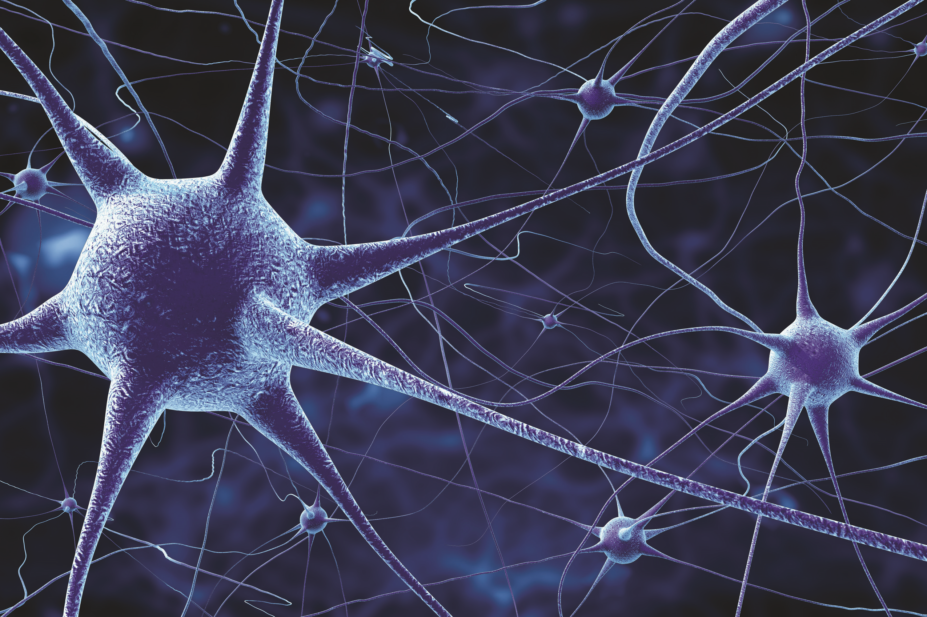
Shutterstock.com
In high-income countries, such as the UK, mental health problems are among the most prevalent medical conditions. These conditions can have a devastating impact on the population; for example, accidental poisoning from opioid addiction is one of the leading causes of death among younger adults in the United States (US). While the UK has not faced a similar opioid epidemic, addiction and other psychiatric disorders still contribute to our public health burden.
Despite the pressing need for new and more effective treatments, many pharmaceutical companies have moved away from researching psychiatric medicines. A string of high-profile failed phase III trials may further discourage investment in psychiatric drug development. There are effective alternatives to psychiatric medications — talking therapies, for example — but their outcomes are generally no better than treatment with drugs. And around half of patients with anxiety and depression fail to recover by the end of treatment[1]
.
Understanding the underlying biology of psychiatric disorders
The basic neurobiological and psychological processes that underlie psychiatric disorders are only beginning to be uncovered. The disorders are seen as a ‘moving target’: many distinct symptoms manifest differently in different people.
There has been historical (and continued) over-reliance on pathognomonic (characteristic) diagnostic frameworks, such as the American Psychiatric Association’s Diagnostic and Statistical Manual of Mental Disorders. A recent drive by the National Institute of Mental Health in the United States — the Research Domain Criteria initiative — has encouraged a better understanding of the fundamental psychological and biological processes that are common across psychiatric disorders.
Transdiagnostic working
When psychiatric symptoms are viewed ‘transdiagnostically’ (ie. by focusing on symptoms rather than on a diagnosis), treatment of a wide array of distinct symptoms can become more manageable because only a small set of disordered processes must be targeted. With a focus on common processes, the overlapping causes and maintaining factors of distinct disorders also become clearer.
Psychiatric disorders often occur concurrently, so reversing a limited number of disordered psychological processes may have an impact on a range of co-morbid problems. Among these processes, a dysregulation of learning and memory seems to be critical in the onset and maintenance of anxiety disorders and addiction.
Addiction and anxiety disorders share transdiagnostic similarities in the psychological processes involved in learning and memory
At first sight, anxiety disorders do not have much in common. Addiction, for example, involves a loss of control over drug-taking, while people with anxiety disorders often have difficulties associated with over-control. These disorder types share transdiagnostic similarities in the psychological processes involved in learning and memory. Consider, for example, patients with severe alcohol problems. Obtaining and consuming alcohol is a priority for these people, and these behaviours often occur at the expense of other important activities. The smell or sight of alcohol can readily trigger intense craving, followed by excessive drinking, despite attempts to resist. In alcohol addiction, behavioural routines are so well rehearsed that they can be easily triggered and promote drinking without deliberation. In one way or another, these phenomena (intrusive thoughts about alcohol craving, and drinking without thinking) reflect abnormal learned responses stored in maladaptive memory traces.
Similarly, in people with phobias and post-traumatic stress disorder (PTSD), physiological, behavioural and cognitive responses are triggered when the individual is confronted by the feared situation or object; there are learned associations between a feared stimulus and a fear response. Visual memories, in the form of distressing mental images of frightening situations or phobic objects, often unintentionally intrude the minds of people with anxiety and trauma disorders (to produce flashbacks). Disordered learning and memory play a core role in fear-related disorders.
Learning and memory
Learning is the process of forming new associations between occurrences in the outside world and events inside the body — this must occur repeatedly to cement the associations into long-term memory. For example, repeated drug-taking in a particular environment leads to the formation of a drug memory, which is activated the next time the person is in the environment, resulting in craving and reflexive drug-seeking and consumption.
Repetition is not always necessary for strong learning to occur — a single stressful experience can leave an indelible mark on the mind
Repetition is not always necessary for strong learning to occur, however. Some events are so salient or stressful that a single experience can leave an indelible mark on the mind. For example, traumatic memories are formed after a single life-threatening event (such as a car incident), and activation of the traumatic memory (for example, hearing the sound of a speeding car) results in fear and the urge to escape (resulting in, for example, avoidance of busy roads).
Biology of learning
At the cellular level, learning involves the formation and sculpting of synaptic connections between neurons in key areas of the brain (such as the amygdala and hippocampus), and remembering involves reactivation of the networks of neural connections formed during learning. Much contemporary research in neuroscience has focused on the cellular and molecular mechanisms underlying these neural processes.
Neuroimaging shows neural changes in fear and reward-learning circuitry in the brains of people with anxiety and addiction
Behavioural neuroscientists often use rodent models of psychiatric disorders to tease out the role of specific brain circuits in behavioural dysregulation. They employ a range of techniques, including localised pharmacological treatments directed at specific brain regions, to decipher the role of particular neurotransmitter systems in those regions. These studies have shown that abnormal neurotransmission is associated with dysregulation in fear and reward-learning circuitry in rodent models of anxiety and addiction, respectively. Modern neuroimaging techniques show similar neural changes in equivalent brain structures in people with anxiety and addiction.
In our research at the Clinical Psychopharmacology Unit at University College London, we use insights from laboratory studies in animals to investigate how learning and memory processes go awry in these disorders, and to understand how these processes might be ameliorated in humans. We do this by, for example, training participants to be afraid of simple, harmless auditory and visual stimuli by repeatedly pairing with uncomfortable electric shocks (‘Pavlovian conditioning’). After repetitions, participants begin to respond fearfully to the stimuli — a simulation of the processes that occur naturally in specific phobias. In other experiments, we show participants disturbing film scenes, which they remember involuntarily over the next several days; these events resemble the flashbacks seen in PTSD.
By simulating the onset of phobic and traumatic reactions, we have been able to ask whether the symptoms of phobias and PTSD can be reversed using drugs that interfere with the neural processes involved in laying down fearful or traumatic memories. If so, these drugs could be developed to prevent or treat these disorders.
Drugs to interfere with processes involved in mental health disorders
Drugs such as propranolol and hydrocortisone — which have well-known anti-hypertensive and anti-inflammatory properties, respectively — can impair certain types of learning and memory. This may be surprising because acute cognitive impairment is not a commonly reported side effect of these drugs. The memory-impairing effects of these drugs seem to occur only under specific and time-limited circumstances. In particular, amnesia for certain types of (emotional) information is evident if propranolol or hydrocortisone are administered within a brief window of opportunity during memory formation, when the memory has yet to be fully stabilised or consolidated. During memory consolidation (a process that takes several hours), synapses are remodelled and memories are cemented in long-term storage. Beta-adrenoceptor and corticosteroid antagonists are thought to prevent these structural and functional changes at synapses (particularly in brain regions involved in processing emotional information), and, as a result, these drugs prevent the formation of long-term emotional memories.
Repurposing drugs already on the market
These discoveries were originally made in non-human animals using direct infusions of propranolol and corticosteroids into brain regions critical for emotional learning and memory (for example, the amygdala and hippocampus)[2]
. However, oral propranolol and hydrocortisone, which are lipophilic and readily cross the blood-brain barrier, can also impair emotional memory formation in humans. Early studies investigated memory for simple stimuli (lists of words and pictures); these drugs appeared to strip away the negative emotions associated with recalling unpleasant events[3]
. These basic pharmacological experiments provided the rationale for testing the effects of propranolol and hydrocortisone in clinical trials targeting much more distressing memories, like those seen in PTSD. The results have been promising (especially with hydrocortisone[4]
).
Repurposing drugs for novel applications in psychiatry can overcome the financial barriers and high failure rates associated with bringing new compounds to market
More importantly perhaps, these trials are an excellent example of how neuroscience-driven research can lead to the repurposing of drugs for novel applications in psychiatry. Such repurposing can overcome the enormous financial barriers and high failure rates associated with bringing new compounds to market.
In our own experiments, we have tested whether other drugs may also interfere with pathological learning and memory in PTSD and addiction. We have focused on glutamatergic antagonists.
Glutamatergic signalling, particularly at N-methyl-D-aspartate (NMDA) receptors, is fundamental to synaptic plasticity (and therefore memory consolidation), so its disruption may provide an additional route to preventing the long-term storage of fear- or addiction-related memories. For example, we have shown that, compared with medical air, the anaesthetic gas and NMDA antagonist, nitrous oxide, can speed up the reduction of distressing intrusive memories in the days after a simulated traumatic event[5]
. These findings provided preliminary evidence that nitrous oxide, a widely used drug with an excellent safety profile, could be useful in preventing the onset of PTSD, and it may have similar effects in weakening addiction-related memories.
Updating consolidated memories that encourage heavy drinking
Our experiments on addiction-related memories assess whether it is possible to interfere with the pre-existing memories that drive heavy drinking. In these studies, participants’ associations between alcohol and reward are already well established. These associations are likely to be very strong because they are formed over years of drinking.
Preliminary findings with glutamatergic antagonists suggest that this is a promising approach in heavy drinkers
An important question remains about whether it is possible to interfere with pre-existing memories that are strongly trained. We are using a translational approach and focusing on a very promising memory plasticity process called ‘memory reconsolidation’[6]
. This process involves ‘updating’ consolidated memories, and is triggered when these memories are retrieved in the presence of new, relevant information. This updating requires a brief period of memory destabilisation, which provides an additional window of opportunity (similar to that afforded when the memory is initially being consolidated) to use the aforementioned amnestic drugs to weaken pre-existing memories in addiction or anxiety disorders. Our preliminary findings with glutamatergic antagonists suggest that this is a promising approach in heavy drinkers.
Social and economic factors
We believe these memory-weakening approaches have enormous potential in psychiatric treatment. However, the approaches are concerned only with processes occurring within the individual, and we should not lose sight of the role that social factors play in psychiatric disorders. The opioid crisis in the United States challenges our assumptions of what it means to be an addict — individuals across the age and socioeconomic spectrums are affected by opioid addiction. Here in the UK, researchers have found a link between socioeconomic deprivation and increased rates of opioid prescription[7]
. This highlights that social and economic distress play an extremely important role in the development and maintenance of psychiatric disorder. Any isolated intervention approach — for example, one that targets only abnormal processes within the individual — while ignoring critical environmental contributors to distress, is unlikely to be effective in the long term. Once we have established the therapeutic potential of memory-interfering pharmacological strategies, the next step is to integrate these into holistic treatments that provide comprehensive support to people with anxiety and substance-use disorders.
References
[1] NHS Digital. Improving Access to Psychological Therapies (IAPT). Executive Summary (May 2017). Available at: https://digital.nhs.uk/media/32180/Improving-Access-to-Psychological-Therapies-Executive-Summary-May-2017/default/iapt-month-may-2017-exec-sum (accessed March 2018)
[2] McGaugh JL. The amygdala modulates the consolidation of memories of emotionally arousing experiences. Annu Rev Neurosci 2004;27:1–28. doi: 10.1146/annurev.neuro.27.070203.144157
[3] Cahill L, Prins B, Weber Met al. Beta-adrenergic activation and memory for emotional events. Nature 1994;371(6499):702–704. doi: 10.1038/371702a0
[4] Sijbrandij M, Kleiboer A, Bisson JI et al. Pharmacological prevention of post-traumatic stress disorder and acute stress disorder: a systematic review and meta-analysis. Lancet Psychiatry 2015;2(5):413–421. doi: 10.1016/S2215-0366(14)00121-7
[5] Das RK, Tamman A, Nikolova V et al. Nitrous oxide speeds the reduction of distressing intrusive memories in an experimental model of psychological trauma. Psychol Med 2016;46(8):1749–1759. doi: 10.1017/S003329171600026X
[6] Kamboj SK & Das RK. Behavioural and pharmacological strategies for weakening maladaptive reward memories: a new approach to treating a core disease mechanism in tobacco use disorder. JAMA Psychiatry 2017;74(3):209–211. doi: 10.1001/jamapsychiatry.2016.3937
[7] Mordecai L, Reynolds C, Donaldson LJ et al. Patterns of regional variation of opioid prescribing in primary care in England: a retrospective observational study. Br J Gen Pract 2018;68(668):e225–e233. doi: 10.3399/bjgp18X695057


